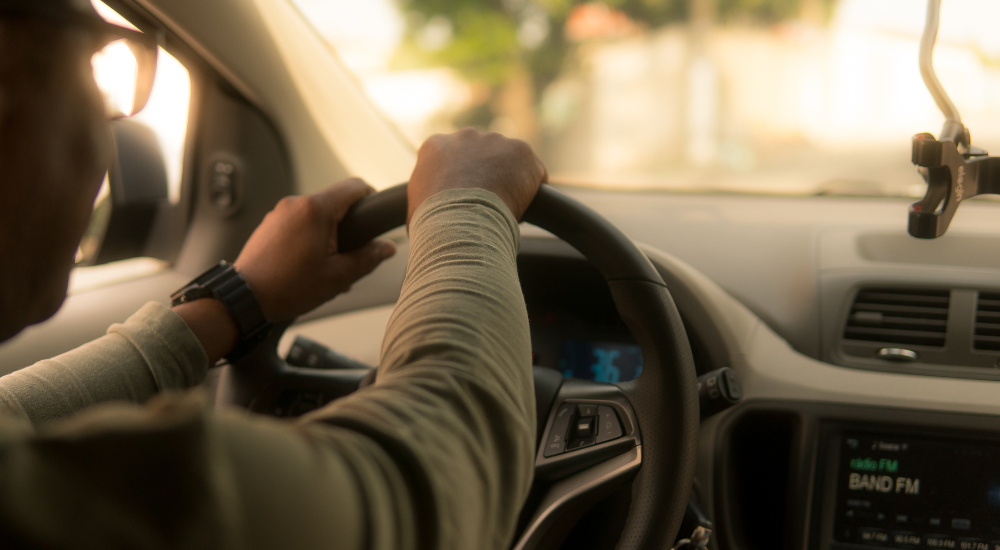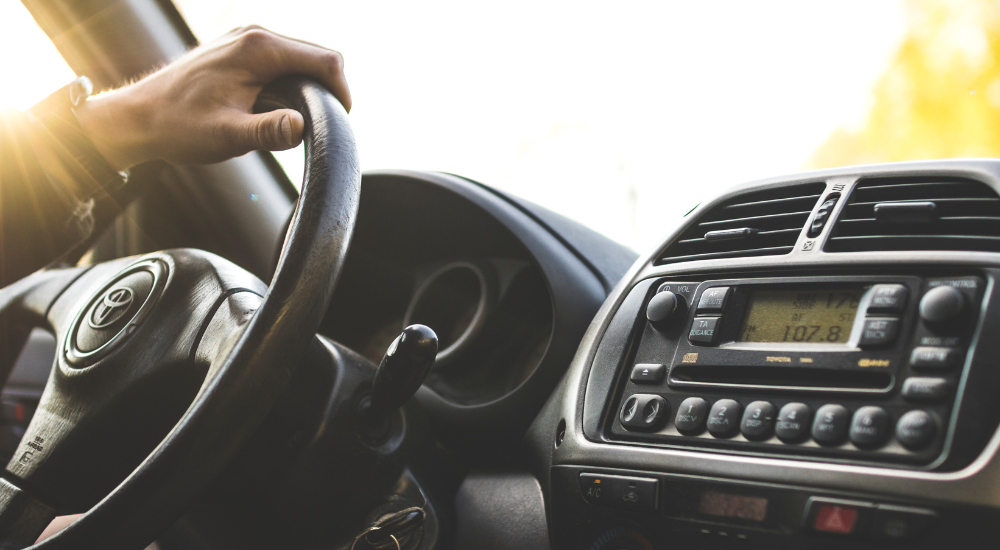
Driving in Spain
In Spain, we drive on the right side of the road which means that all traffic coming from the right has right of way, unless you are driving on the road that has clear right of way. Distances and speeds are expressed in kilometres (km) and kilometres per hour (km/h) whilst service stations offer fuel by the litre. In our guide below, we explain the types of road, the driving licence (and the requirements for UK citizens post-Brexit), drink driving, driving in flip flops and sandals, carrying gas bottles and much more.
Types of Road
Autovías de Peaje (AP) are toll roads which are indicated by white letters over a blue background, such as [AP-7]. The maximum speed is 120 km/h and these routes are the fastest way of getting somewhere, albeit at a cost. However, a few AP roads have become toll-free in recent years (including a vast section of the AP-7).
Autovías are similar to AP roads but they are free to use. They are indicated by white letters over a blue background, such as [A-7]. The maximum speed is 120 km/h and are a perfect option to get somewhere over a short distance.
Carreteras Nacionales are national roads which are identified by the letter N followed by the road number, white letters over a red background, such as [N-332]. They are free to use and often cut through cities, towns and villages. The maximum speed is 90 km/h, although this can drop to 70 km/h at junctions and to 50 km/h where passing through a small town or village. In some areas, overtaking is not permitted.
Carreteras Autónomicas are country roads which are identified by the letter(s) of the autonomous territory in which they belong, such as [CV-734], most commonly black letters on a yellow background. The maximum speed is 90 km/h but since they are the most basic roads in the country, this can result in lower maximum speeds in some areas.
Carreteras Europeas are roads that belong to the UN’s international E-road network and are identified by the letter E followed by a number, white letters on a green background, such as [E-15]. If it forms part of the cross-national road network, you’ll often see the number of autopistas de peaje, autovías and carreteras nacionales accompanied by this number, such as [AP-7 | E-15]. (For interest only, the E-15 stretches from Inverness in the United Kingdom to Algeciras in southern Spain.)
The Driving Licence
Your Spanish Licence · Permiso de Conducción
Known as the ‘Permiso de Conducción’, the Spanish driving licence permits the holder to drive in Spain, the classes of vehicles which are shown on its reverse, normally B and BE (car and car+trailer). It is issued by the ‘Dirección General de Tráfico (DGT)’ and, since Spain is a member of the EU, it is valid as a European driving licence throughout the European Economic Area (EEA).
The driving licence is obtained by attending an officially-recognised driving school and passing theoretical and practical tests. All drivers must be in possession of their licence when they drive and it is obligatory to show it to the authorities on request.
The licence is valid for ten years (see “Licence Renewal” below).
See also “UK Citizens Resident in Spain” below.
Points
You start with 12 points on your licence which can be reduced when an offence is committed; when the number of points reaches zero, the licence becomes invalid and you will need to sit a road awareness and reeducation course as well as re-sit the driving theory test. You are rewarded with a maximum of additional three points after four years of “clean driving”.
Offences that can result in the loss of points include:
- drink-driving – 6 points (see below)
- using a mobile phone whilst driving – 6 points + 200 EUR fine
- throwing an object from the vehicle – 6 points + 500 EUR fine
- driving without due care and attention – 4 points
- driving more than 40km/h over the legal limit – 4 points
- driving without a seat belt – 4 points + 200 EUR fine
- using a radar detection device – 3 points + 200 EUR fine
You can check how many points you have on your licence here or via the miDGT app on your mobile phone. Note that you will need to set up an account to access the information using either a digital certificate or Cl@ve system.
Licence Renewal
Your Spanish driving licence is valid for ten years; section 4b. on the front of your licence will tell you when it will expire. The renewal process can be done in Xàbia at the Policlinica Cume de Jávea located close to the Lidl roundabout up to three months prior to the expiry date. All you need to do is to make an appointment and bring along your current driving licence. You’ll be given a series of tests, including a medical questionnaire, an eyesight exam and a response test. A current photograph will also be taken. It will take about a month to receive your new licence through the normal postal system, although you will be given a paper licence to cover up to six months in case there is a delay. When we did the renewal in December 2023, it cost 130 euros for both of us and took four weeks.
UK Citizens Resident in Spain

UK citizens who are officially resident in Spain must apply for a Spanish driving licence within six months of becoming so to continue driving in the country. You cannot continue driving using an International Driving Permit (IDP).
After an agreement was reached between Spain and the UK, any UK citizen who moved to Spain before March 16th 2023 and didn’t exchange their UK licence for a Spanish equivalent by September 15th 2023, will no longer be able to drive in Spain until it has been exchanged. Be warned: if you choose to drive without a valid licence, you could be subject to a 200 euro fine and your vehicle could be impounded.
If you moved to Spain after March 16th 2023, you can drive using your valid UK licence for six months from the date you acquire residency. But it is recommended that the exchange process is started as soon as possible as your licence will become invalid after six months. Exchange is possible after six months, but your UK licence will not be valid for driving in Spain while you await your exchange to be completed
The Dirección General de Tráfico (DGT) has updated its website with detailed information on the exchange process here.
The UK Government has also updated its page on Living in Spain with regards to driving and driving licences for British citizens legally resident in Spain.
The Agreement also provides for the exchange of information on vehicles and their owners with regards to traffic offences committed in either the UK or Spain. These are related to road safety and include speeding, failure to wear a seat belt, failure to stop at a red light, driving whilst intoxicated, driving whilst under the influence of drugs, not wearing a crash helmet, and the illegal use of a mobile phone.
Using your Spanish Licence in the UK
You can use a Spanish licence for driving in the UK for short trips. If you move back to the UK on a permanent basis, you can exchange your Spanish licence for a UK equivalent without taking a test.
Remember: If you are resident in Spain, you cannot renew your UK driving licence with the DVLA. If your licence expires (or is lost or stolen), you will have to apply to the DVLA for a ‘Certificate of Entitlement‘ to be able to apply for a Spanish driving licence.

Driving in Spain
What you MUST carry with you when driving
Driving Licence (Permiso de Conducir)
If you don’t have a Spanish licence, always carry the original or a notarized copy – only these are valid. If your licence doesn’t have a photo, the police may request an official photo ID like your passport or national ID card to verify your identity.
Vehicle Registration Document (Permiso de Circulación)
This document will record the license plate number of the vehicle, the owner’s name, the vehicle usage (private, rental, etc.) and the number of seats.
ITV Card · Vehicle Inspection Document (Tarjeta ITV)
This will include vehicle dimensions, maximum load & towing capacity (for trailers), approved tyre sizes and the ext technical inspection date.
Proof of Insurance (Resguardo de Seguro)
For Spanish vehicles, it’s no longer mandatory to carry it, but it’s recommended in case of an accident — it helps when filling out the friendly accident report. A receipt or copy of the policy is enough. For foreign vehicles, the insurance document must be in the car at all times, so that police know which insurer to contact in the event of a breakdown or accident.
Drink Driving
According to the DGT, one in three drivers killed on the road tested positive for alcohol or other drugs. The legal limit for alcohol in Spain is 0.5g of alcohol per litre of blood (0.25mg of alcohol per litre of air exhaled), much lower than that of other countries in Europe, including the UK. For drivers under the age of 18, it is zero. The penalty for drink-driving is a fine of between 500 EUR and 1,000 EUR and up to six points removed from your driving licence.
Drivers are obliged to take a breathalyser test at the request of a police officer when their vehicle is involved in an accident, if the driver is suspected to be under the influence of alcohol or other substances, if the driver has broken a law, such as speeding, or at a random control point set up by the police. Refusal could attract a fine of up to 2,000 EUR, a ban of up to 4 years and even imprisonment.
Gas Canisters
By law, you can carry two gas bottles in your vehicle which must be transported in an upright, vertical position and properly secured so that they cannot move during the journey. Any vehicle containing gas bottles cannot be left in an underground car-park. Bottles cannot be transported by moped or motorbike.
Flip Flops
Although it is not illegal to drive a vehicle in Spain whilst wearing flip flops, it is strongly advised not to do so since it can be extremely dangerous since the feet can easily slip out of them and there have been numerous cases of such footwear getting trapped between the pedals of the vehicles, sometimes with fatal consequences. Drivers who insist of wearing flip flops or other sandals should also be aware that there are laws which demand that drivers must be in full control of the vehicle and if a driver who is involved in an accident or collision is deemed to have been wearing inappropriate footwear that meant that they could not have been so, this can be taken into consideration during any investigation and a fine could be imposed on that driver.
One thing which is against the law is to drive a vehicle without a shirt. And this also includes the passengers since the DGT determines that the seatbelt rubs up against the skin, causing painful friction, especially in emergency stops. A fine of between 80 EUR and 200 EUR can be applied, depending on the judgement of the police officer.
Shopping on the Back Seat?
Everything that is transported within a vehicle must be properly secured, whether it be people, animals or bags of shopping, and the reason for this is very simple since, in the event of a collision, these items can become projectiles within the vehicle that can cause considerable damage. Article 14 of the General Traffic regulations is clear: “The load transported in a vehicle, as well as the accessories used for its conditioning or protection, must be arranged and, if necessary, secured in such a way that they cannot drag, fall totally or partially or move in a dangerous manner.” The fine for not complying can be up to 200 EUR. With regards to pets, they cannot be transported unsecured in a vehicle and must be strapped in like any other passenger.
Accidents
If you have an accident in Spain, you and any other party involved must complete an accident statement form which should be carried in your vehicle at all times; ask your insurance company to provide one. Called the ‘Declaración Amistosa De Accidente’ in Spain, it is a vital document when it comes to resolving insurance claims and is a European document that is available in several languages, including Spanish and English. After the accident or collision, fill out as much detail as possible in one column and the other party fills out the other column. There is space to make a sketch of how the collision occurred and mark the points of visible damage. Make sure that both parties sign the documents. They can then be sent to the respective insurance companies. But don’t add or alter any information once each party has a separate copy. If the other party doesn’t want to complete the form, you can’t insist of them doing so but you can contact the police to ask them to attend the incident and make a report. Without the statement form or a police report, it is more difficult to get a favourable result.
Importing a UK-registered vehicle
UK citizens who are registered as resident in Spain must also register their UK-plated vehicle with the Spanish authorities. The DGT provides more information in English here (PDF, 85KB, 1 page). The registration may require the payment of some taxes.
Driving a car which is not your own
You can drive any car, including one which is not your own, so long as the vehicle has all the correct documentation, such as the Permiso de Circulación, a current ITV, and valid insurance, and that you, as the driver, possesses a valid driving licence. However, it is recommended that the vehicle owner contacts their insurance company for any particular regulations that might affect your policy, such as if the driver is under the age of 26 or if their driving licence is a non-EU one, which could attract additional costs in the case of an accident.
The DGT provides an option for a vehicle owner to inform them that someone else will be regularly using their car for continuous periods of more than 30 days, for example, if they don’t live in Spain and a friend or neighbour uses the vehicle on a regular basis. This is beneficial in that any driving infraction that is committed by this person whilst driving your car is automatically sent directly to that person which means that they will be able to deal with any fines, etc. immediately.
This can be achieved through this link which opens an official DGT page – COMUNICACIÓN DEL CONDUCTOR HABITUAL – through which you, as the vehicle owner, can inform the authorities of a regular user of your car as well as modify the details at any time. It is also important that the owner contact the DGT when the person stops using the vehicle on a regular basis so that notifications of any possible infractions revert back to the owner.
If someone else was driving your vehicle when an infraction occurred and the paperwork was sent directly to you as the owner, you can contact the DGT to request that they notify that person directly using this link.

